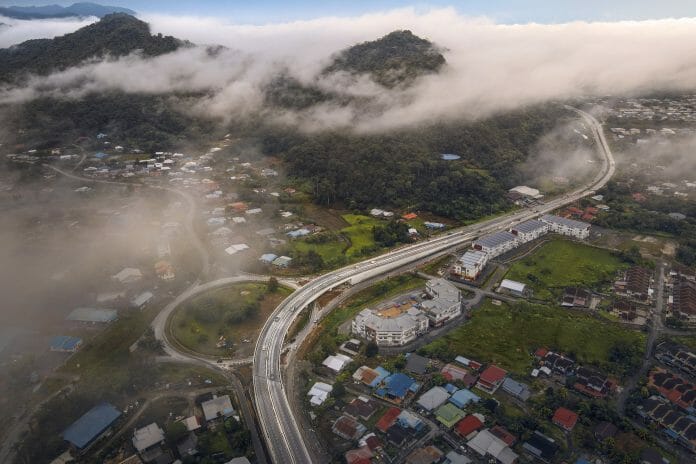In 2015, Sabah contributed 6.3% to the national GDP. After half a decade, the contribution rate descended to 5.7% by 2021. Sabah state economy was in tough times since 2018 amid low plateaued global commodity prices. Covid-19 pandemic-led crisis added more salt to the wound, especially with the snap state election held in Sep-20 which caused the infection rate to spike and was followed by state-wide lockdown measures. The state’s economic growth has been below Malaysia’s GDP growth rate since 2018. Contraction rate in 2020 was deeper than Malaysia’s -5.5%.
As the infection rate surged in 4QCY20, economic recovery in Sabah was much slower than the national average, +1.1% vs. +3.1% in 2021. In particular, Sabah’s economy was hit the most by the decline in tourism sector activity; the closure of international borders in particular was one of the factors which led to a sharper contraction in 2020 and a relatively weaker recovery in 2021.
In tandem with the national direction, the services sector is taking a larger economic share since 2015 and moving towards a domestic-driven economy. Approximately 47.3% of the Sabah state economy in 2021 was made up of the services sector. The manufacturing sector’s share was less than 10%. The state economic structure differed from Malaysia’s in the size of primary sectors i.e. agriculture and mining which took more than 40% of its GDP as compared to 13.8% of the national GDP in 2021. Sabah’s main agricultural output is palm oil plantations. According to Sabah Economic Development Investment Authority (SEDIA), the state is almost self-sufficient in fruits, vegetables, and coffee. Looking ahead, bright prospects are in the horizon for the Sabah state economy particularly driven by elevated global commodity prices, the revival of tourism-related activities, and an increase in infrastructure spending
Pan-Borneo Highway and tourism-related activities to rebound. Research house Kenanga expects construction sector activities in the state to pick up steadily. As of Sep-22, Pan-Borneo Sabah Highway was at 65% completion. It believes the other 35% of the work will be rolled out in 2023 onwards. On the other hand, international borders reopening in Apr-22 will revive Sabah’s tourism activities and overall services sector.
Timely, Holistic and Practical Economic Roadmap; Sabah Development Corridor Blueprint 2.0 (2021~2030). SDC2.0 Blueprint was launched in Nov-21. The blueprint entails future economic and socio-development plans in the next decade, 2021~2030. The blueprint also is aligned with the Federal Government’s Shared Prosperity Vision 2030 and State Government’s Sabah Maju Jaya Plan.
Sabah GDP growth at +4.1% per annum for 2022~2030. Referring to the blueprint, the Sabah state economy is projected to grow by +4.1% per annum during 2021~2030, slightly higher than the pre-pandemic average +3.8% (2016~2019).
Despite the challenges, the positive view on the development of the state is there with the expectations that the projects and initiatives will have an impact on Plantation, Transportation, Power, Construction, and Oil & Gas.









